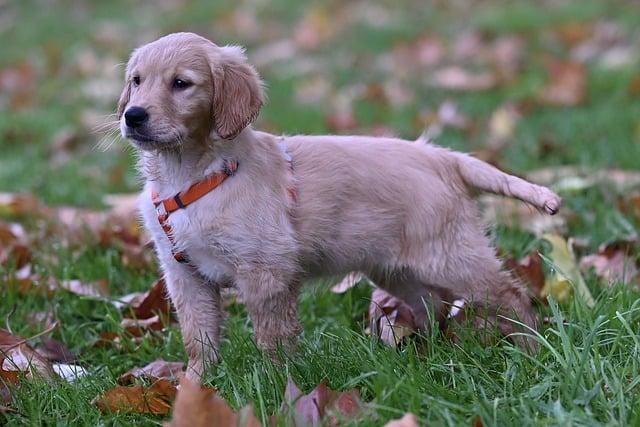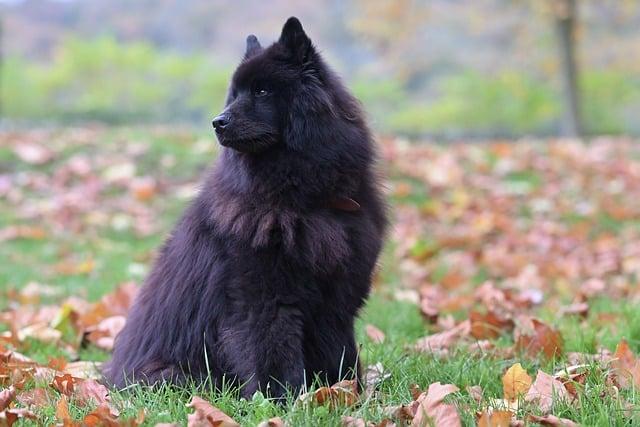In a quiet neighborhood, a family welcomed a new puppy, a Rottweiler named Max. As he grew, so did his reputation for strength and loyalty. One day, a stray dog wandered into their yard, barking aggressively. Max, with his imposing stature, stood his ground, showcasing the breed’s protective instincts. While Rottweilers are often labeled as aggressive, Max demonstrated that with proper training and socialization, they can be gentle giants. The truth is, aggression stems from environment, not breed. Understanding this can change perceptions and save lives.
Contents
- Understanding the Characteristics of Aggressive Fighting Dogs
- Evaluating the Most Notorious Breeds in the Fighting Dog Category
- The Impact of Training and Socialization on Aggression Levels
- Responsible Ownership: Managing and Mitigating Aggressive Behaviors
- Q&A
Understanding the Characteristics of Aggressive Fighting Dogs
When examining the traits of dogs known for aggressive fighting, it’s essential to recognize that aggression is often a product of both genetics and environment. Certain breeds have been historically bred for strength, tenacity, and a high prey drive, which can contribute to their fighting capabilities. Breeds such as the American Pit Bull Terrier, Rottweiler, and Doberman Pinscher are frequently cited in discussions about aggressive fighting dogs due to their physical prowess and strong instincts.
Moreover, the behavior of these dogs can be significantly influenced by their upbringing and training. A dog raised in a nurturing environment with proper socialization is less likely to exhibit aggressive tendencies, regardless of its breed. Conversely, dogs that are neglected, abused, or improperly trained may develop aggressive behaviors. Key factors that contribute to aggression include:
- Genetic predisposition to aggression
- Lack of socialization with other animals and humans
- Negative reinforcement during training
- Environmental stressors, such as a chaotic home life
Understanding the characteristics of these dogs also involves recognizing their physical attributes. Many aggressive fighting breeds possess strong jaws, muscular builds, and high energy levels, which can make them formidable opponents in a fight. Their natural instincts often drive them to assert dominance, especially in unfamiliar situations. This can lead to aggressive displays if they feel threatened or challenged. Therefore, it’s crucial for potential owners to be aware of these traits and to commit to responsible ownership practices.
Lastly, it’s important to note that aggression is not an inherent trait of all individuals within these breeds. Many dogs labeled as aggressive can be loving companions when placed in the right environment. Responsible breeding, training, and socialization can mitigate aggressive tendencies, allowing these dogs to thrive as well-adjusted pets. By focusing on positive reinforcement and understanding the unique needs of each dog, owners can foster a safe and harmonious relationship with their pets.
Evaluating the Most Notorious Breeds in the Fighting Dog Category
When discussing the most notorious breeds in the fighting dog category, it is essential to consider both historical context and behavioral traits. Certain breeds have been selectively bred for strength, tenacity, and a high pain threshold, which can contribute to their reputation. Among these breeds, the **Pit Bull**, **Rottweiler**, and **Mastiff** stand out as some of the most recognized for their fighting capabilities. Each of these breeds possesses unique characteristics that have made them formidable in various contexts.
The **Pit Bull**, often at the center of aggressive dog discussions, is known for its incredible strength and determination. Originally bred for bull-baiting and later for dog fighting, this breed exhibits a strong prey drive and an unwavering loyalty to its owner. However, it is crucial to note that aggression is often a result of environment and training rather than inherent breed traits. Responsible ownership and proper socialization can significantly mitigate aggressive tendencies.
Next, the **Rottweiler** has a long history as a working dog, originally used for herding and guarding. Their powerful build and protective instincts make them excellent guardians, but these same traits can lead to aggression if not properly managed. Rottweilers require consistent training and socialization from an early age to ensure they develop into well-rounded companions rather than aggressive fighters. Their loyalty and intelligence can be harnessed positively, making them both formidable protectors and loving family pets.
Lastly, the **Mastiff** breed, known for its massive size and strength, has also been associated with fighting. Historically used in battles and as guard dogs, Mastiffs possess a natural protective instinct. However, their temperament can vary widely; some are gentle giants, while others may exhibit aggressive behavior if not properly trained. Understanding the individual dog’s personality and providing appropriate training and socialization are vital in preventing aggression, showcasing that even the most notorious breeds can be loving and safe companions when raised in the right environment.
The Impact of Training and Socialization on Aggression Levels
Understanding the role of training and socialization in managing aggression levels in dogs is crucial, especially when discussing breeds often labeled as aggressive. Proper training can significantly alter a dog’s behavior, transforming a potentially aggressive animal into a well-mannered companion. This is particularly important for breeds that have been historically associated with aggression, as their natural instincts can be tempered through consistent and positive training methods.
Socialization plays an equally vital role in shaping a dog’s temperament. Exposing a dog to various environments, people, and other animals from a young age helps to build confidence and reduce fear-based aggression. A well-socialized dog is less likely to react aggressively in unfamiliar situations. Key aspects of effective socialization include:
- Early exposure: Introducing puppies to diverse experiences early on.
- Positive reinforcement: Rewarding calm behavior in new situations.
- Controlled interactions: Gradually increasing exposure to different stimuli.
Moreover, the impact of training extends beyond mere obedience. It fosters a bond between the dog and its owner, built on trust and understanding. When dogs are trained using positive reinforcement techniques, they learn to associate commands with rewards, which can lead to a more harmonious relationship. This bond can mitigate aggressive tendencies, as dogs feel secure and less threatened in their environment. Effective training programs often include:
- Basic commands: Teaching essential commands like sit, stay, and come.
- Impulse control: Encouraging patience and self-restraint.
- Behavior modification: Addressing specific aggressive behaviors through targeted training.
the combination of proper training and socialization is essential in managing aggression levels in dogs, particularly in breeds often perceived as aggressive. By investing time and effort into these areas, owners can significantly reduce the likelihood of aggressive behavior, ensuring a safer and more enjoyable experience for both the dog and the community. Ultimately, the responsibility lies with the owner to cultivate a well-adjusted pet through dedicated training and socialization efforts.
Responsible Ownership: Managing and Mitigating Aggressive Behaviors
Owning a dog known for its aggressive tendencies requires a commitment to responsible ownership. It is essential to understand that aggression can stem from various factors, including genetics, environment, and training. By recognizing these influences, owners can take proactive steps to manage and mitigate aggressive behaviors effectively. This not only ensures the safety of the owner and the community but also promotes a healthier, more balanced life for the dog.
One of the most critical aspects of responsible ownership is **early socialization**. Exposing a dog to different people, environments, and other animals during its formative months can significantly reduce the likelihood of aggressive behavior later in life. Engaging in positive experiences helps the dog develop confidence and adaptability, which are crucial traits for reducing fear-based aggression. Consider enrolling your dog in obedience classes or socialization groups to foster these essential skills.
Training plays a pivotal role in managing aggressive behaviors. **Consistent, positive reinforcement techniques** should be employed to teach commands and appropriate behaviors. This approach not only strengthens the bond between the owner and the dog but also establishes a clear hierarchy and expectations. Additionally, addressing any signs of aggression promptly, such as growling or snapping, is vital. Ignoring these behaviors can lead to escalation, making it imperative to consult with a professional trainer or behaviorist when necessary.
Lastly, creating a safe and structured environment is crucial for dogs prone to aggression. This includes establishing **clear boundaries** and routines that help the dog feel secure. Providing adequate physical and mental stimulation through regular exercise and interactive toys can also alleviate pent-up energy that may contribute to aggressive tendencies. By prioritizing responsible ownership practices, dog owners can significantly reduce the risks associated with aggressive behaviors, ensuring a harmonious relationship with their canine companions.
Q&A
-
What breeds are considered the most aggressive fighting dogs?
While aggression can vary by individual dog, breeds often associated with fighting include:
- American Pit Bull Terrier
- Rottweiler
- Doberman Pinscher
- American Staffordshire Terrier
It’s crucial to remember that aggression is not solely determined by breed; training and socialization play significant roles.
-
Are all fighting dogs inherently aggressive?
No, not all dogs from fighting breeds are aggressive. Many are loving, loyal companions. Aggression is often a result of:
- Improper training
- Lack of socialization
- Abuse or neglect
Responsible ownership and proper training can lead to well-adjusted pets.
-
Can aggressive behavior be modified in fighting dogs?
Yes, aggressive behavior can often be modified through:
- Professional training
- Consistent socialization
- Positive reinforcement techniques
With the right approach, many dogs can learn to behave appropriately in various situations.
-
What should potential owners consider before adopting a fighting breed?
Before adopting a fighting breed, consider:
- Your experience with dog training
- The time you can dedicate to socialization and exercise
- Your living environment and its suitability for a strong breed
Being well-informed and prepared can lead to a successful and fulfilling relationship with your dog.
while the debate over the most aggressive fighting dog may spark passion, it’s crucial to remember that behavior is shaped by training and environment. Responsible ownership and proper socialization are key to fostering a safe and loving companion.

大家好,我是彼得潘,專業的手法身體治療師。我喜歡探索和研究各種主題,並透過與人工智慧的合作分享專業、實用、有趣的文章。我們定期進行人工審核,以確保內容的準確性。如果您發現文章中有任何不準確的地方,請隨時與我們聯繫,我們會及時糾正。您可以透過 [email protected] 與我們聯繫。



